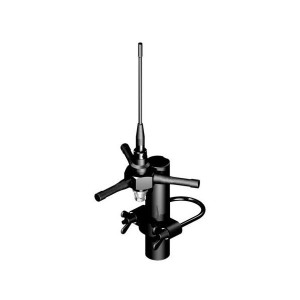Your shopping cart is empty!
MENU

Some networks are simple. You plug in a few key pieces, and everything works just fine. Other networks are specialized. They serve precise functions and require specific hardware. When you find yourself working with a specialty network, your only hope is to get the right tools for the job.
What separates a specialty network from any other network? It comes down to use cases. The most common wireless networking applications are Wi-Fi, cellular, and radio which adhere to industry standards and protocols. Anything that exists outside of these domains could reasonably be called a specialty network. These wireless networks include military applications, Iridium communications, ISM networking, and more.
Military communications use diverse equipment for equally diverse applications. Certain areas of the spectrum are explicitly reserved for government and defense uses.
Working in that space requires access to antennas that serve those frequency bands and applications.
The full scope of military communication is vast, but there are reasonable expectations for the average military antenna. Looking at the Mobile Mark PM-1350 antenna as an example, military equipment often needs high levels of durability and utility. This particular antenna is small enough to embed into troop clothing. The TMA-24-2CT tactical mesh antenna, on the other hand, is rugged enough to mount on the exterior of a military vehicle.
The Iridium satellite constellation provides global coverage for voice communications and other applications. Mobile and fixed networks that expand beyond the traditional line of sight benefit from satellite coverage. This lack of coverage makes Iridium networking ideal for mobile fleets and remote operations lacking access to standard communication infrastructure.
The LTM503 from Mobile Mark demonstrates how a single antenna can provide multiple functions without driving up costs or complications. This antenna works with GPS, LTE MIMO, and Wi-Fi MIMO, granting access to all three of these forms of communication simultaneously. Because it works with Iridium, it connects anywhere in the world.
ISM stands for Industrial, Scientific, Medical. It is the list of frequency bands that fall under the purview of the International Telecommunications Union (ITU) and its ISM designations. In truth, ISM covers just about everything. Wi-Fi, Bluetooth, and RFID all use ISM bands. So do microwave ovens, near-field communications, and garage door openers.
Considering the scope of ISM, it might be hard to consider it a specialty network, but within this grouping are highly specialized functions and the antennas that make them work. For example, consider the HD3-915. This heavy-duty antenna connects LoRaWAN devices. It allows large numbers of devices to communicate across considerable distances on unlicensed bands while using minimal power. Ultimately, LoraWAN is one of many specialty applications under the ISM umbrella.
Specialty networks come in all shapes, sizes, and functions. When you have specific requirements, you need equipment that fills niche roles. For that, Westward Sales is your invaluable resource. Our expert sales engineers hold a deep understanding of networking topics. We won’t just suggest a few items to get you on your way. Instead, we take the time to understand what you are trying to build and guide you to optimal hardware that does what you need. Contact us today to find the right tools for your network.